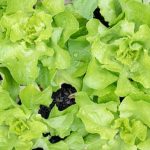Are you considering starting a new vegetable garden? One popular and effective method is gardening in raised beds. Raised bed gardening offers many benefits, such as improved soil drainage, better pest control, and easier maintenance. In this article, we will explore the world of gardening in raised beds and how to successfully grow a variety of vegetables in this setup.
Raised beds are an excellent option for vegetable gardening, allowing for better control over the growing environment and increased productivity. By utilizing raised beds, you can create an ideal growing space for your vegetables while also taking advantage of limited space in your yard or garden. Whether you are a beginner or experienced gardener, raised bed gardening can be a rewarding way to cultivate delicious vegetables.
In this comprehensive guide, we will cover everything from choosing the right location for your raised bed garden to selecting the best vegetables for this type of gardening. We will also provide tips on soil preparation, planting techniques, and caring for your garden throughout the growing season. By the end of this article, you will be well-equipped to start and maintain your own successful raised bed vegetable garden.
Benefits of Using Raised Beds for Vegetable Gardening
When it comes to vegetable gardening, using raised beds has numerous benefits that can help maximize your harvest and overall gardening experience. One of the main advantages of raised beds is the improved soil quality. The soil in raised beds tends to be looser and better drained, which creates an ideal environment for growing vegetables. This also allows for better root growth and development, resulting in healthier plants.
Another benefit of using raised beds for vegetable gardening is the ease of maintenance. Raised beds require less weeding and have fewer issues with soil compaction, making it easier for gardeners to maintain their crops. Additionally, raised beds can help with pest control by providing a physical barrier between your plants and potential pests.
In terms of accessibility, raised beds are also a great option for those with physical limitations or mobility issues. Their elevated design eliminates the need for bending or kneeling, making it easier for individuals to tend to their garden without strain. Raised beds are also easier to protect from wildlife and pets, which can often be a concern when growing vegetables in open ground areas.
Overall, utilizing raised beds for vegetable gardening can result in higher yields, less maintenance, and increased accessibility for gardeners of all abilities. Whether you’re a seasoned gardener or just starting out, consider incorporating raised beds into your gardening strategy for a more bountiful and enjoyable experience.
| Benefits | Description |
|---|---|
| Improved Soil Quality | The loose and well-drained soil in raised beds promotes better root growth. |
| Ease of Maintenance | Less weeding and soil compaction make raised beds easier to maintain. |
| Accessibility | Raised beds provide an elevated design that eliminates the need for bending or kneeling during gardening. |
Choosing the Right Location for Your Raised Bed Garden
When establishing a raised bed vegetable garden, one of the first and most important steps is to choose the right location for your garden. The success of your garden will greatly depend on its location, so it’s crucial to make the right choice. Here are some factors to consider when choosing the location for your raised bed garden:
- Sunlight: Ensure that your raised bed garden receives at least 6-8 hours of direct sunlight each day. Most vegetables require ample sunlight to grow and produce a bountiful harvest. Choose a spot in your yard or patio that gets plenty of sun throughout the day.
- Water access: Consider the proximity to water sources when selecting a location for your raised bed garden. You’ll need easy access to water for regular watering, especially during dry periods. Additionally, consider how rainwater runs off in the area and ensure that the garden does not get flooded during heavy rains.
- Soil quality: Take into account the existing soil quality in the area where you plan to place your raised beds. It’s essential to have well-draining soil with good fertility and structure. If necessary, you can amend the soil with organic matter or compost before setting up your raised beds.
By carefully considering these factors when choosing the right location for your raised bed vegetable garden, you can set yourself up for a successful and productive gardening experience. Remember that the ideal location will provide ample sunlight, easy access to water, and good soil quality for optimal plant growth and yield.
Selecting the Best Vegetables for Raised Bed Gardening
When it comes to selecting the best vegetables for your raised bed gardening, it’s essential to consider the space and depth of your raised beds. Some vegetables are better suited for the shallow soil of raised beds, while others with deep root systems may not thrive as well.
One popular choice for raised bed gardening is leafy greens such as lettuce, spinach, and kale. These vegetables have shallow root systems and can be grown in close proximity to one another, making them ideal for the limited space of raised beds. Additionally, they tend to grow quickly and can be harvested multiple times throughout the season.
Another excellent option for raised bed vegetable gardening is root vegetables like carrots, radishes, and beets. These vegetables do well in the loose soil of raised beds and don’t require a lot of depth to grow successfully. With proper spacing and regular watering, you can enjoy a bountiful harvest of these nutritious crops.
Furthermore, compact varieties of tomatoes, peppers, and cucumbers are well-suited for raised bed gardening. These smaller plants can thrive in the warm and well-drained soil of raised beds and can be trained to grow vertically with the help of trellises or supports. This not only maximizes space but also makes harvesting easier.
| Vegetable | Suitability for Raised Beds |
|---|---|
| Lettuce | Ideal due to shallow root system |
| Carrots | Well suited for loose soil in raised beds |
| Tomatoes (compact varieties) | Can thrive in warm and well-drained soil of raised beds |
Soil Preparation and Fertilization for Raised Beds
One of the key factors in successful vegetable gardening in raised beds is the quality of the soil. Before planting, it’s important to prepare the soil properly to ensure that your vegetables have a healthy environment to grow in. Begin by removing any weeds, rocks, or debris from the raised bed. Then, loosen the soil with a garden fork or shovel to ensure proper aeration and drainage.
After preparing the soil, it’s essential to fertilize it to provide necessary nutrients for your vegetable plants. One option is to use organic compost, which will enrich the soil and improve its structure. You can also add organic fertilizer specifically formulated for vegetable gardens to ensure that your plants receive all the nutrients they need to thrive.
Another important aspect of soil preparation for raised bed vegetable gardening is testing the pH levels of the soil. You can purchase a pH testing kit at your local garden center and adjust the pH levels as needed by adding lime or sulfur. Maintaining proper pH levels will allow your plants to absorb nutrients more effectively and promote healthy growth.
In addition to preparing and fertilizing the soil before planting, it’s essential to continue feeding your vegetables throughout their growing season. Consider using a balanced, slow-release fertilizer that will provide ongoing nutrition for your plants as they mature in your raised bed garden.
Planting and Watering Techniques for Raised Bed Vegetable Gardens
When it comes to planting in your raised bed vegetable garden, there are a few techniques that can help you maximize space and yield. Consider using companion planting, which involves planting two or more different types of plants in close proximity for mutual benefit.
For example, planting carrots with onions can help repel pests and improve growth. Additionally, utilizing vertical gardening techniques such as trellises or cages can optimize space by allowing vining plants like tomatoes or cucumbers to grow upwards.
Watering is crucial for the success of your raised bed vegetable garden. Since the soil in raised beds tends to drain well, it’s important to water regularly, especially during hot and dry periods. One effective watering technique is drip irrigation, which delivers water directly to the roots of your plants while minimizing evaporation. Another option is installing a soaker hose system that allows water to seep slowly into the soil around your vegetables.
Here are some tips for planting and watering in your raised bed vegetable garden:
- Consider interplanting compatible vegetables and using vertical gardening techniques
- Utilize drip irrigation or soaker hose systems for efficient watering
- Monitor moisture levels in the soil and adjust watering accordingly
- Mulch around your plants to help retain moisture and reduce watering needs
By implementing these planting and watering techniques, you can ensure healthy growth and bountiful harvests from your raised bed vegetable garden. Remember to observe the specific needs of each type of vegetable you’re growing and make adjustments as necessary to promote optimal growth.
Maintaining and Caring for Your Raised Bed Garden
Once your vegetables are planted in your raised beds, the work is not over. Maintaining and caring for your raised bed garden is an ongoing process that requires attention to ensure a bountiful harvest. One of the main advantages of raised bed gardening is the ease of maintenance compared to traditional gardening methods.
Regular watering is crucial for your raised bed vegetable garden, especially during hot, dry periods. The soil in raised beds can dry out more quickly than ground-level soil, so be sure to check the moisture levels frequently and water as needed. Consider installing a drip irrigation system or soaker hoses to make watering more efficient and effective.
In addition to watering, it’s important to monitor your plants for pests and diseases. Inspect your vegetable plants regularly for any signs of trouble, such as discolored leaves, holes in foliage, or unusual growth patterns. Addressing pest and disease issues promptly can help prevent widespread damage and maintain the health of your raised bed garden. Applying organic pest control methods and practicing crop rotation can help keep common garden pests at bay without resorting to chemical pesticides.
By providing ongoing care and attention to your raised bed vegetable garden, you can ensure a successful growing season and enjoy a plentiful harvest of homegrown produce. Regular maintenance will also help prolong the lifespan of your raised beds and set the stage for future successful growing seasons.
Harvesting and Enjoying the Fruits of Your Raised Bed Vegetables
Once your raised bed vegetable garden is fully grown and bountiful, it’s time to reap the rewards of your hard work. Harvesting your homegrown vegetables is a satisfying experience and allows you to enjoy fresh, flavorful produce at its peak. From plucking ripe tomatoes off the vine to cutting crisp lettuce leaves for a salad, here are some tips for making the most of your harvest.
Harvesting Techniques
When it comes to harvesting vegetables from your raised beds, timing is key. Different types of vegetables have their own ideal harvesting times, so it’s important to familiarize yourself with the specific needs of each crop.
For example, tomatoes should be picked when they are fully colored and slightly soft to the touch, while leafy greens like lettuce and spinach can be harvested by snipping individual leaves as needed. Be sure to use sharp gardening shears or knives to avoid damaging the plants during harvesting.
Prolonging the Harvest
To maximize your vegetable harvest from raised beds, consider implementing techniques that can extend the growing season. This could include using row covers or cold frames to protect delicate crops from frost, or planting a variety of vegetables with staggered maturity dates so that you can continually harvest throughout the season. Additionally, proper watering and fertilization can help promote continued growth and yield from your raised bed garden.
Enjoying Your Homegrown Produce
Finally, after all the hard work and patience cultivated in your raised bed vegetable garden, it’s time to savor the delicious rewards. Whether you’re enjoying a simple salad made with freshly harvested greens or cooking up a hearty stir-fry with an assortment of homegrown veggies, there’s nothing quite like indulging in produce you’ve nurtured from seed to table.
Tips for Extending Your Raised Bed Garden’s Growing Season
In conclusion, gardening in raised beds has become increasingly popular among vegetable gardeners due to its numerous benefits. The use of raised beds allows for better control over soil quality, drainage, and overall plant health. By choosing the right location, selecting the best vegetables, preparing the soil properly, and following proper planting and watering techniques, gardeners can ensure a successful harvest from their raised bed gardens.
One of the key factors in maximizing the potential of a raised bed vegetable garden is to extend the growing season as much as possible. With proper care and attention, gardeners can enjoy an extended harvest well into the fall or even winter months.
Adding seasonal covers such as cloches or row covers can protect plants from frost and cold temperatures, allowing them to thrive beyond their normal growing season. Additionally, utilizing techniques such as succession planting and intercropping can help maximize space and prolong the productivity of a raised bed garden.
Furthermore, maintaining a regular monitoring schedule for pests, diseases, and soil fertility is essential for extending the growing season of a raised bed vegetable garden. Using organic pest control methods and regularly amending the soil with compost or organic fertilizers can help ensure that the plants remain healthy and productive throughout an extended season.
With careful planning and attention to detail, gardeners can continue to enjoy an abundant harvest from their raised bed vegetable gardens well beyond the typical growing season.
Frequently Asked Questions
What Vegetables Grow Well in Raised Beds?
Vegetables that grow well in raised beds include tomatoes, peppers, lettuce, spinach, carrots, and radishes. These plants benefit from the improved drainage and warmer soil that raised beds provide.
What Vegetables Should Not Be Grown in a Raised Bed?
Some vegetables that should not be grown in a raised bed are those with deep roots like corn and root vegetables such as potatoes or sweet potatoes. These plants may struggle to thrive due to space limitations.
What Do You Put in the Bottom of a Raised Vegetable Bed?
In the bottom of a raised vegetable bed, it’s important to place a layer of cardboard or newspaper to smother any grass or weeds. This can be followed by a layer of straw or leaves to improve drainage and decomposition, ultimately enriching the soil as it breaks down over time.

If you’re looking to get into vegetable gardening, or are just looking for some tips on how to make your current garden better, then you’ve come to the right place! My name is Ethel and I have been gardening for years. In this blog, I’m going to share with you some of my best tips on how to create a successful vegetable garden.





